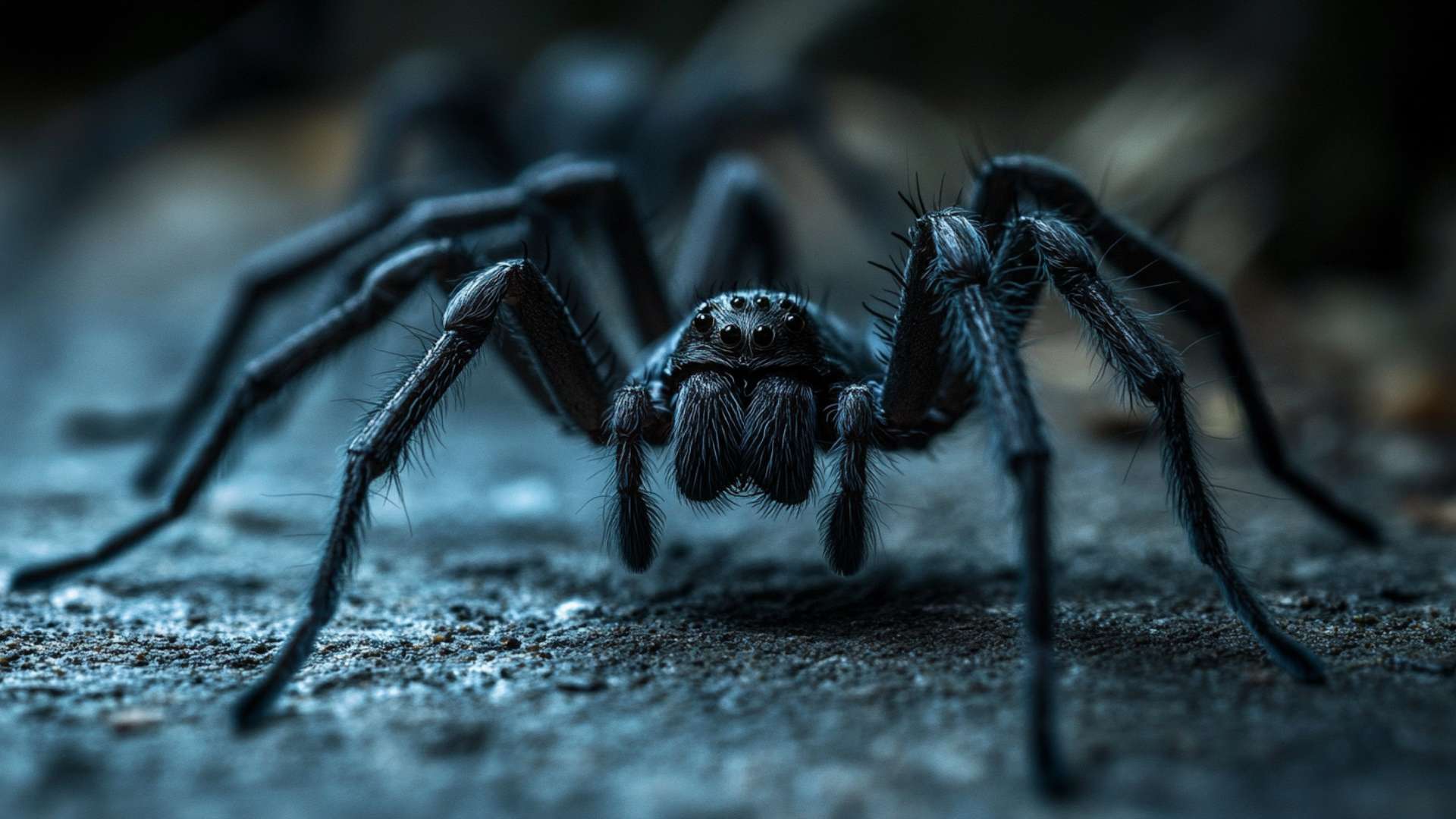Spiders, those eight-legged arachnids that often evoke fear and fascination, are truly remarkable creatures. With over 45,000 known species of spiders inhabiting diverse environments across the globe, it’s safe to say that they have established themselves as one of nature’s most successful predators.
From the daunting tarantulas to the agile jumping spiders and delicate orb weavers, each spider species boasts its own unique attributes and behaviors. They have adapted to thrive in a variety of ecosystems, showcasing their incredible diversity.
Exploring the impact of heat on their survival
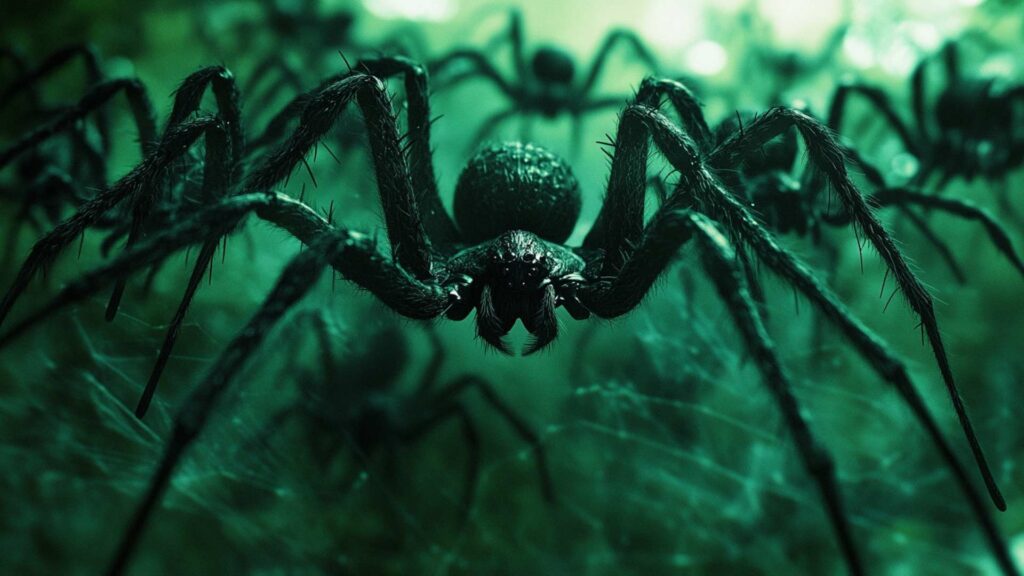
Temperature plays a crucial role in determining how a spider lives and behaves. While some species of spiders prefer colder climates where temperatures drop significantly during certain seasons, others thrive in warm tropical regions where heat is abundant year-round.
Outdoor spider species like wolf spiders are often found basking under the sun’s rays during warmer months, while house spiders tend to seek shelter indoors when temperatures dip too hot car too low. But what happens when temperatures become excessively hot?
Can these fascinating creatures withstand scorching conditions? It is precisely this question that drives us to explore the impact of heat on their survival.
By delving into the intricate details of spider physiology and behavior in relation to temperature fluctuations, we can gain a deeper understanding of how they cope with extreme heat and whether it poses a risk to their existence. From examining their thermoregulation abilities to investigating adaptations specific to different species, we will embark on an intriguing journey uncovering how spiders respond when faced with soaring temperatures.
We will also explore instances where extreme heat might push them beyond their limits and potentially lead to mortality. So prepare yourself for an awe-inspiring exploration into the world of spiders as we shed light on whether these resilient arachnids can indeed die from heat.
Spider Physiology and Thermoregulation
When it comes to spider physiology, these eight-legged wonders possess an intricate and fascinating body structure. From their exoskeletons to their internal organs, every component plays a crucial role in their survival.
Spiders are cold-blooded creatures, meaning they cannot regulate their body temperature internally like warm-blooded animals do. Instead, they rely on external factors to maintain an optimal temperature for their bodily functions.
The exoskeleton of a spider serves as a protective armor, shielding them from the outside world. It not only provides structural support but also acts as a barrier against water loss.
Beneath this rigid outer layer lies the cephalothorax, which houses vital organs such as the brain and reproductive system. The abdomen, on the other hand, accommodates the digestive system and silk glands responsible for web-spinning.
Nature’s Thermostat: How Spiders Keep Cool or Warm
Despite being at the mercy of environmental temperatures, spiders possess remarkable adaptive strategies that allow them to regulate their body temperature naturally. By positioning themselves strategically in their habitats, they can either bask in sunlight or seek shelter in cooler areas. Some spider species are known to exhibit thermoregulatory behaviors known as “postural adjustments.” They alter their body posture by extending or retracting their legs to increase or decrease exposure to heat sources like sunlight.
This method helps them achieve a favorable balance between warmth and protection from overheating. Additionally, spiders employ behavioral thermoregulation by actively relocating themselves within microhabitats that offer optimal temperatures for survival.
Some species build intricate webs near water sources or beneath vegetation that provides shade during scorching summers. Others utilize burrows or crevices where they can retreat during extreme weather conditions.
While spiders lack internal control over their body temperature, they have evolved remarkable mechanisms to adapt to their surroundings. Their exoskeletons, cephalothorax, and abdomen work in harmony to support vital functions.
By utilizing postural adjustments and behavioral thermoregulation strategies, these arachnids can navigate the ever-changing thermal landscape. Understanding how spiders naturally regulate their body temperature is crucial in appreciating their resilience and remarkable ability to thrive in a wide range of environments.
Heat Tolerance in Spiders
Spiders, those remarkable eight-legged arachnids, have evolved a remarkable ability to withstand a wide range of temperatures. While they may not be impervious to heat, their impressive adaptability helps them navigate diverse environments with varying temperature extremes. Different species display varying degrees of heat tolerance, which are often influenced by factors such as habitat adaptation and physiological characteristics.
One of the key factors affecting heat tolerance in spiders is their habitat adaptation. Just like humans who prefer warm places during cold seasons, spiders also have their own preferences for cold weather.
Some species of spiders thrive in warm and humid climates, while others have adapted to colder regions where they must endure harsh winters. For instance, certain species of outdoor spiders can be found living under tree bark or in crevices during cold seasons to protect themselves from extreme temperatures.
In addition to habitat adaptation, the physiological characteristics of spiders play a crucial role in determining their ability to withstand heat. Being cold-blooded creatures means that spiders rely on external sources of warmth to regulate their body temperature.
This makes them highly sensitive to changes in ambient temperature. While they cannot generate internal heat like warm-blooded animals do, many spiders possess efficient mechanisms for capturing warmth from their environment and utilizing it for survival.
The Heat Endurance Spectrum: From Sun Lovers to Shade Seekers
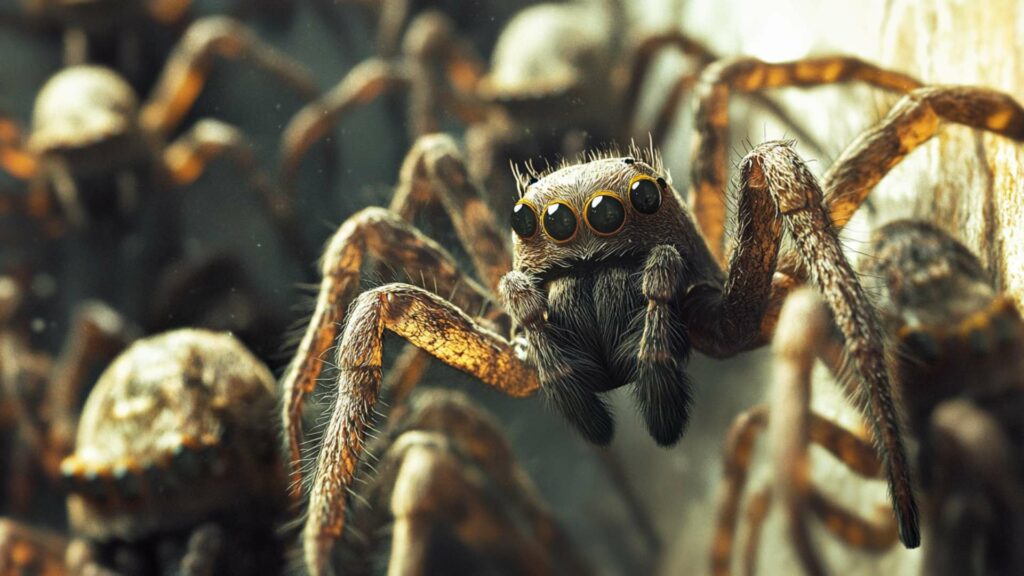
The heat tolerance levels among different spider species vary significantly due to various evolutionary factors and natural selection processes. Some spiders have evolved specifically to thrive in hot climates whereas others are more suited for temperate or cooler environments. Certain desert-dwelling spider species showcase an exceptional ability to withstand scorching temperatures that would discourage most other creatures.
These arachnids have developed specialized adaptations to survive temperatures such as reflective body coloration or intricate behaviors like constructing elaborate burrows deep within the sand, shielding themselves from the direct heat of the sun. On the other hand, many spiders that prefer cooler climates may struggle to survive in extreme heat.
These species often seek shelter in shaded areas during hot periods, such as underneath rocks or within leaf litter. By minimizing their exposure to high temperatures, they can mitigate the risks associated with overheating and maintain a more favorable microclimate for their survival.
Thriving in a World of Extremes
Heat tolerance in spiders is not a one-size-fits-all trait; it varies greatly among different species and even within populations of the same species. The ability to withstand heat is not just a matter of survival but also impacts other essential aspects of spider life, including their ability to hunt prey and successfully reproduce. Understanding the factors influencing heat tolerance in spiders provides valuable insights into how these remarkable creatures manage to survive in diverse environments across the globe.
By adapting behaviorally and physiologically, spiders have found unique ways of coping with extreme temperatures – be it seeking refuge in cool hiding spots or employing specialized adaptations like reflective body surfaces. So next time you marvel at a spider expertly weaving its intricate web on a scorching summer day or shivering beneath a rock on a chilly winter morning, take a moment to appreciate their remarkable resilience and adaptability.
Optimal Temperature Range for Spiders
Spiders, as incredible arachnids, thrive within a specific temperature range that is conducive to their survival and reproductive success. While different species may have slight variations in their preferences, most spiders tend to fare best in temperatures ranging from 70°F to 85°F (21°C to 29°C). This temperature sweet spot provides them with the ideal conditions necessary for crucial biological processes.
When the temperature falls below this range, spiders face difficulties in maintaining their body temperature. Cold temperatures can slow down their metabolic rate, affecting their ability to move and hunt efficiently.
In extreme cases, such as during fall and winter or in colder regions, many spiders enter a state of dormancy known as diapause. During diapause, spiders conserve energy by reducing their activity levels and metabolism until warmer conditions return.
On the other hand, excessively high temperatures can also pose challenges for spiders. When the mercury rises well above 90°F (32°C), some species may become sluggish or seek sheltered spots to avoid direct heat exposure.
Extended periods of scorching heat can cause dehydration and desiccate spiders’ delicate bodies since they do not have a waterproof coating like insects do. These extreme temperatures can also disrupt essential physiological processes within the spider’s body.
Effects of extreme temperatures on spiders’ health and behavior
Extreme heat or cold can significantly impact a spider’s health and behavioral patterns. When spiders live subjected to freezing temperatures for prolonged periods or sudden drops in temperature beyond their tolerance level, some species may not survive.
For instance, house spiders that typically live indoors and are adapted to warmer conditions may succumb if exposed to freezing outdoor temperatures. Conversely, excessive heat can be equally detrimental.
High temperatures force many spider species into hiding during peak daytime hours when the heat is most intense. They seek refuge in crevices, under rocks, or in vegetation to escape the scorching sun.
Prolonged exposure to extreme cold or heat can lead to dehydration, affecting their ability to function properly and potentially causing death. In addition to the physical impact of temperature extremes, spiders’ behavior can also be affected.
For example, some aggressive species like wolf spiders may become more irritable when they feel threatened by high temperatures. This heightened irritability could lead to an increase in defensive behaviors such as biting if they perceive a threat.
Overall, while most spiders are adapted to specific temperature ranges that optimize their survival and reproduction, extreme temperatures on either end of the spectrum can have adverse effects on their health and overall behavior. Understanding these optimal temperature ranges helps us appreciate the remarkable adaptability of these arachnids and highlights the importance of maintaining suitable conditions for their well-being.
Heat-Related Challenges for Spiders
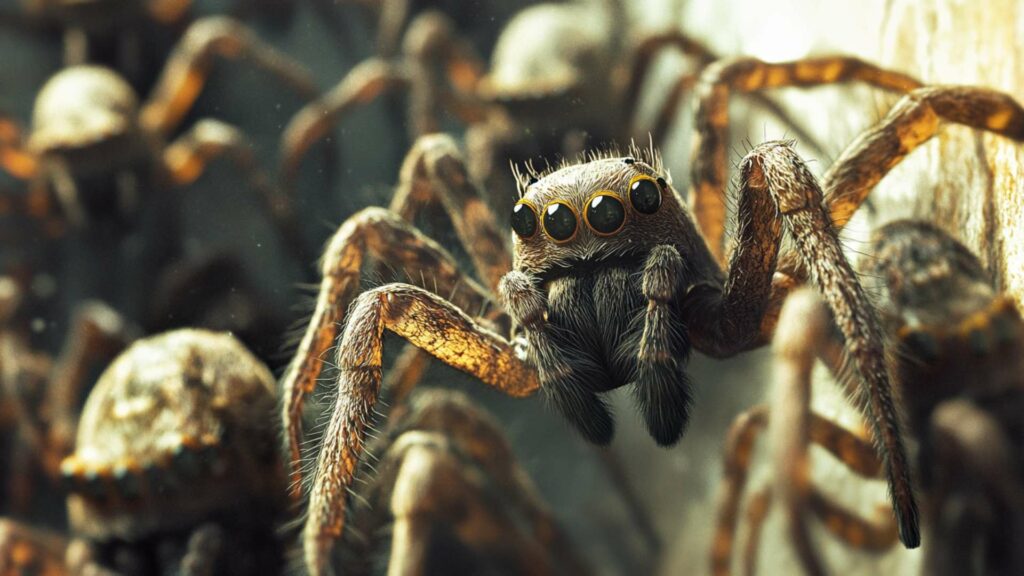
Dangers of overheating: dehydration, metabolic stress, and death
When the temperature starts to rise, just like us humans who seek relief from the scorching heat, spiders face their own set of challenges. Overheating can be extremely dangerous for these tiny arachnids.
One of the primary risks they face is dehydration. Spiders, like other creatures, rely on water and food to survive.
When exposed to high temperatures for prolonged periods, they can lose moisture rapidly through their exoskeletons and respiratory systems. Dehydration not only weakens them physically but also affects their ability to hunt for prey efficiently.
Apart from dehydration, spiders also experience metabolic stress when subjected to excessive heat. Much like our bodies struggling under extreme conditions, spiders’ internal systems become strained as well.
Their metabolism speeds up significantly in an attempt to regulate body temperature and maintain vital functions. This increased metabolic activity consumes energy reserves rapidly and can ultimately lead to exhaustion or even death if not resolved promptly.
Strategies employed by spiders to avoid excessive heat exposure
Spiders may be small in size, but they have developed remarkable strategies to combat excessive heat and protect themselves from its detrimental effects. One common approach is behavioral thermoregulation – actively seeking cooler microclimates within their environment. Some spider species exhibit a preference for shady areas or retreat into crevices during the hottest parts of the day when temperatures are at their peak.
Furthermore, certain spider species have evolved unique adaptations that help them withstand high temperatures more effectively. For instance, house spiders are known to build webs near windows or under eaves where there’s better airflow and reduced exposure to direct sunlight.
Additionally, smaller species may exhibit a phenomenon called “basking,” where they position themselves at specific angles relative to the sun’s rays in order to minimize direct heat absorption. These behaviors and adaptations collectively enable spiders to regulate their body temperature and escape the worst of the heat’s consequences.
Overheating poses significant challenges for spiders, including dehydration, metabolic stress, and ultimately death. However, through behavioral and physiological adaptations, these resilient creatures have developed strategies that allow them to cope with excessive heat.
Understanding these mechanisms not only sheds light on the remarkable resilience of spiders but also fosters a greater appreciation for their intriguing survival tactics in hot environments. (Note: It is important to note that while spiders generally strive to avoid excessive heat exposure, extreme temperatures can still cause harm or even be fatal under certain conditions. This article does not cover the topic of using spider spray or methods to discourage spiders from entering cars or homes; it focuses solely on the impact of heat on spider survival.)
Spider Adaptations to Extreme Heat Environments
Desert-dwelling spiders have evolved remarkable adaptations to survive the scorching temperatures of their arid habitats. One notable adaptation is their ability to burrow deep into the sand to create cooler underground shelters.
These burrows provide a refuge from the intense heat, shielding them from direct sunlight and reducing water loss through evaporation. Some species, like the trapdoor spider, construct intricate burrows with hinged doors made of silk and soil, which they can close during the hottest parts of the day.
Unique behaviors or physical traits that help them cope with high temperatures
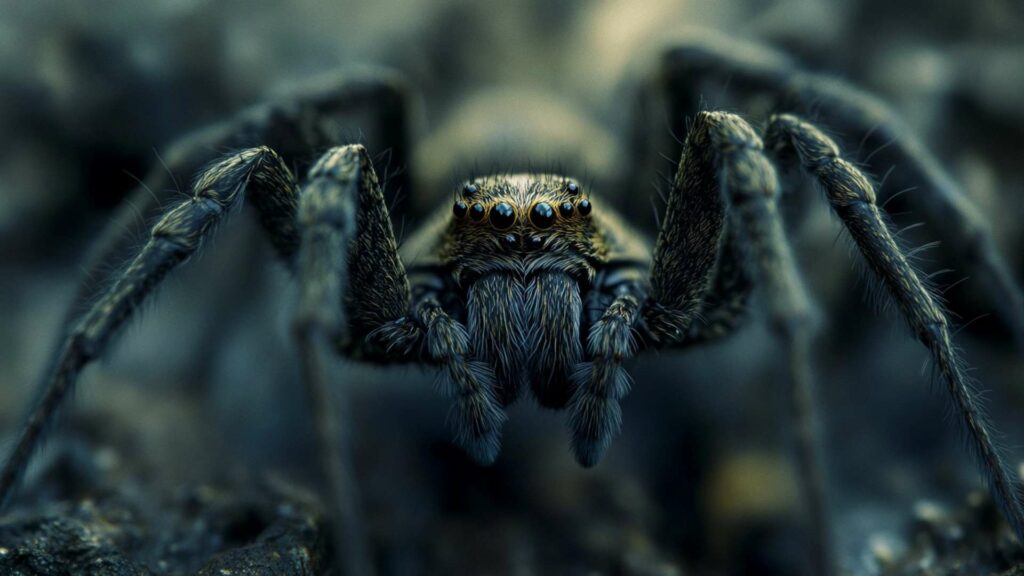
In addition to seeking shelter, desert spiders have developed unique behaviors and physical traits that aid in coping with high temperatures. Some species are nocturnal, preferring to be active during cooler nighttime hours when the heat is less intense.
Others exhibit thermoregulatory behaviors such as extending their legs outwards or lifting their abdomens upwards to reduce direct contact with hot surfaces. Certain species also possess specialized physical characteristics that enhance heat tolerance.
For instance, some desert-dwelling spiders have elongated legs covered in fine hairs that help disperse excess heat. These hairs create a layer of insulation between their bodies and the scorching ground surface, minimizing heat absorption.
Spider Responses to Heat Stress
As temperatures rise, spiders exhibit various behavioral changes aimed at mitigating heat stress. One common response is seeking out shady spots or retreating into crevices where they can hide and find relief from direct sunlight exposure.
Spiders may also alter their activity patterns by becoming more inactive during peak daytime heat and resuming foraging or hunting behavior during cooler periods. Additionally, some spider species adjust their web-building behavior in response to heat stress.
They may build their webs in locations with better airflow, such as higher up in vegetation or between objects that create natural wind tunnels. This strategic positioning helps dissipate excess heat and prevents the web from becoming too hot, which could potentially damage the delicate silk strands.
Physiological adjustments that occur when spiders are exposed to extreme heat
When exposed to extreme heat, spiders undergo physiological adjustments to maintain their internal balance. One crucial adaptation is increasing their metabolic rate, which allows them to generate more energy for essential bodily functions and maintain optimal internal temperatures. This increase in metabolism helps sustain vital processes even when external temperatures are elevated.
Furthermore, spiders can regulate water loss by altering their respiratory rates and reducing perspiration through specialized structures called spiracles. These tiny openings on the abdomen allow them to control water loss by adjusting the speed of air exchange during respiration.
The Lethal Threshold – Can Spiders Die from Heat?
Spiders have varying temperature thresholds beyond which they face lethal consequences. While some species have higher thermal tolerances due to specific adaptations, most spiders cannot survive extreme heat levels exceeding a certain threshold. The lethal threshold varies among species but generally falls within a range of 110-120 degrees Fahrenheit (43-49 degrees Celsius).
Extreme heat can lead to spider mortality through multiple mechanisms. Prolonged exposure causes dehydration as spiders lose critical body fluids through evaporation at an accelerated rate. It also places an immense metabolic strain on these arachnids as their bodily functions struggle under such stressful conditions, ultimately leading to organ failure.
Furthermore, high temperatures can disrupt essential life processes within spiders’ bodies, including protein denaturation and enzyme malfunctioning. These disruptions to spiders and their survival can have severe consequences for their overall health and survival, potentially resulting in death.
Conclusion – Appreciating the Resilience of Spiders in Hot Environments
In the face of extreme heat, spiders display astonishing adaptations and responses that allow them to persevere and survive. From desert-dwelling species with burrowing abilities to behavioral adjustments like seeking shade or building webs strategically, spiders showcase their resilience in hot environments.
While it is true that excessive heat can push spiders beyond their limits, leading to mortality, it is important to acknowledge the incredible adaptability of these arachnids. Their ability to regulate body temperature, adjust behaviors, and even withstand extreme temperatures within certain limits illustrate the remarkable capabilities of these often misunderstood creatures.
Understanding how spiders navigate and respond to heat stress not only deepens our appreciation for their survival strategies but also provides valuable insights into the delicate balance between organisms and their environments. So let us marvel at the resilience of these eight-legged marvels as they continue to inspire fascination even under scorching conditions.
Conquer Spiders with D-Termination: Las Vegas’ Premier Pest Control!

f you’re worried about spiders infesting your Las Vegas property, D-Termination is the solution you need. Our team of experts specializes in spider infestation elimination, bringing back peace and serenity to your space. Bid farewell to spiders today—choose D-Termination for effective pest control!
Contact us at 702-919-6310 or visit dtermination.com to schedule your spider control service and reclaim your space from these bothersome pests.
Frequently Asked Questions:
Some spiders may die in extreme heat, but many are adapted to survive.
Spiders can thrive in hot climates.
Spiders can become overheated if exposed to excessive heat.
Spiders in a car might struggle in extreme heat and could die if not released.

